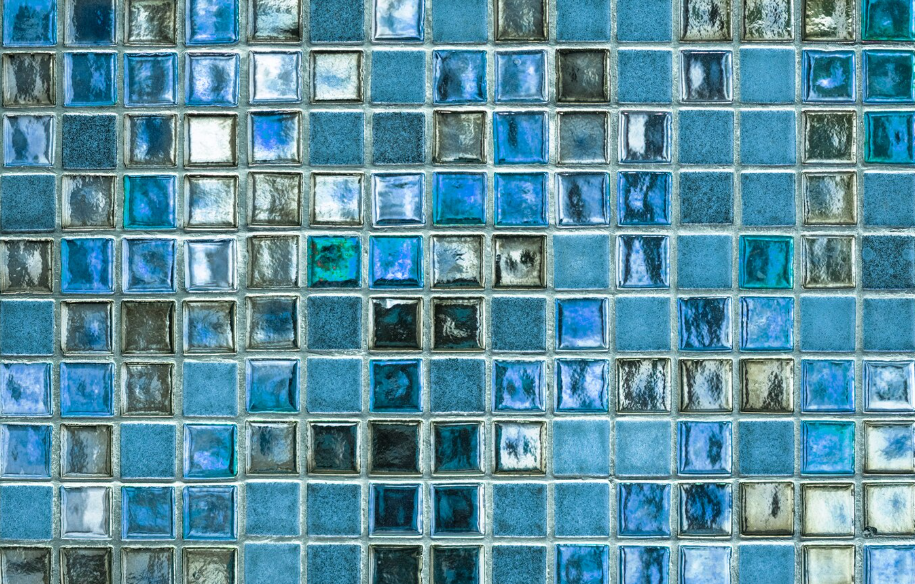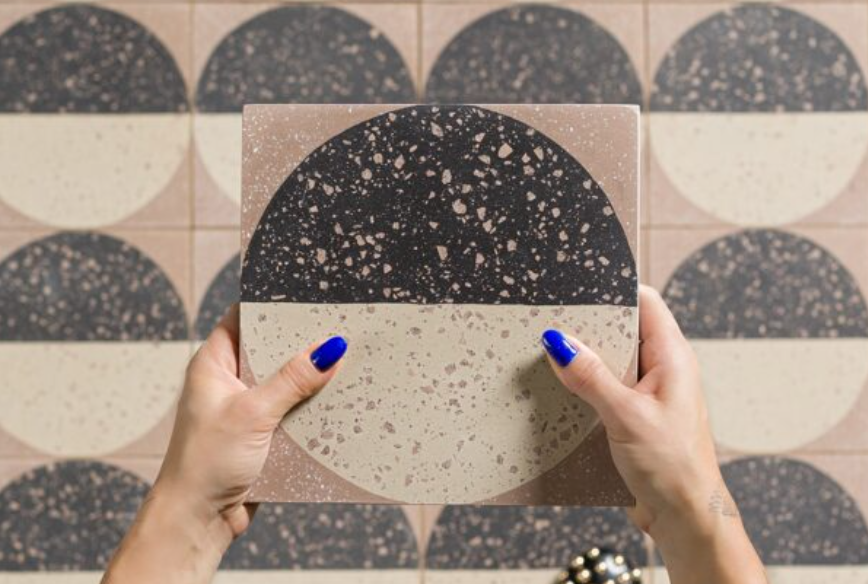- Close Menu

Ready to transform your surfaces into captivating focal points that elevate every room?
Mosaic tile patterns marry precision and artistry, turning ordinary walls and floors into signature statements.
By exploring ten inventive layouts—from classic revivals to geometric innovations—you’ll discover how small tiles can make a big impact on your home’s character. Each pattern offers unique visual dynamics and installation considerations, so you can match creativity with practicality.
Let’s dive into the mosaic techniques set to inspire designers and homeowners alike this year.

The herringbone pattern—traditionally executed with larger planks—takes on new life in micro-scale mosaics. Tiny rectangular tiles are laid at 45° to form the characteristic zigzag, creating dynamic movement across backsplashes or shower floors. This intricate layout demands precise cuts and uniform grout joints, but the payoff is a richly textured surface that plays with light and shadow. Designers favor contrasting grout to accentuate the pattern’s geometry, though tone-on-tone grout offers a subtler, seamless effect. Whether in glass, marble, or ceramic, herringbone micro mosaics bridge heritage style with modern refinement.
Basketweave mosaics evoke classic craftsmanship by pairing small squares with elongated rectangles in an interlaced motif. This pattern adds depth and a tactile quality to flooring, particularly in entryways and powder rooms where historic charm is prized. Contemporary interpretations use muted stone or porcelain in monochromatic palettes for a clean, updated look. While installation requires careful alignment of each “weave,” the result is a timeless grid that directs foot traffic visually. Maintenance is straightforward—regular sweeping and grout cleaning preserve the woven effect for decades.
The Greek key—or meander—pattern is timeless for framing larger tile fields or demarcating zones. In mosaic form, this continuous ribbon of interlocking right angles introduces classical resonance to modern interiors. Typically installed as a narrow border around showers, vanities, or even fireplace mantels, the Greek key’s precise turns demand exact cutting and mitered corners. Designers often pair glossy glass mosaics in deep blues or blacks against light stone to amplify contrast. As both a nod to antiquity and a graphic design element, this layout remains endlessly adaptable.
Arabesque mosaics feature graceful, petal-like shapes that interlock to form fluid, floral-inspired patterns. These hand-cut tiles—often in glazed ceramic or natural stone—add organic softness to geometric spaces, making them ideal for feature walls or custom art installations. The installation process requires skillful placement and occasional filler cuts to maintain seamless curves. Selecting a gradient glaze or subtle ombré effect enhances dimensionality and accentuates each lozenge’s outline. Arabesque layouts marry craftsmanship with feminine elegance, suitable for bathrooms and artistic nooks alike.
Inspired by early 20th-century subway dots, this pattern uses small circular mosaics set within square tiles or strip grids. The playful polka-dot effect translates beautifully into contemporary kitchens and retro-inspired powder rooms. By varying dot color or background tile finish—glossy white with matte black dots, for example—you achieve high-contrast visuals with minimal complexity. Installation calls for pre-mounted sheets, which simplifies alignment and reduces adhesive work. Metro dot mosaics bring whimsical punctuation to clean-lined spaces without losing sophistication.
Pinwheel mosaics link four small squares around a central rectangular “pivot,” creating a dynamic rotational illusion. Often rendered in two-tone palettes—light field squares against darker pinwheels—this layout adds kinetic energy to floors or accent walls. Accurate sizing is crucial: any misalignment diminishes the pattern’s turning effect. grout color should be selected to either unify the grid or highlight each pinwheel. This pattern suits entryways and kitchen floors where a sense of motion can enliven the design narrative.
Chevron mosaics simplify the herringbone’s angle by aligning rectangles end to end in a continuous V-shape. The result is a bold zigzag that can span entire floors or function as a trim band around field tiles. Matte stone chevrons against polished porcelain backgrounds create compelling texture contrasts. Because chevrons emphasize directionality, they can visually lengthen hallways or widen narrow rooms. Installation requires consistent angles—use laser guides to maintain the pattern’s precision across large spans.
Starburst mosaics radiate spokes from a central tile, creating sun-like motifs in small repeating modules. These patterns work beautifully as medallions in flooring or as decorative accents on shower walls. Glass and metallic tiles heighten the effect, reflecting light outward for a luminous focal point. Each starburst module must be grouted with minimal joints to preserve the continuous radiance. The complexity of radial layouts demands professional installation but yields show-stopping results.
Hexagon mosaics interlock without grout gaps, offering a seamless honeycomb texture. Opt for elongated or “skewed” hex shapes for a more modern aesthetic, or classic honeycomb for timeless geometry. Mixed-material installations—solid stone hexes coupled with metal or glass insets—add luxe accents. This pattern suits floors and backsplashes, providing consistent slip performance and maintenance ease. grout color can either blend for a monolithic look or contrast to emphasize each cell’s shape.
For the adventurous, combine multiple mosaic shapes—dots, arabesques, hexes—in a coronating layout that transcends a single motif. Designers map custom sheets where shapes transition organically, creating a patchwork tapestry of forms. While planning demands CAD modeling and mock-ups, the end result is a bespoke surface unlike any prefab sheet. This medley approach works best in feature installations—entry vestibules or accent walls—where its artistry can be showcased. Mixed-shape mosaics epitomize creative freedom, demonstrating that tiled surfaces can be true canvases.
Aim for 1/16″ to 1/8″ grout joints—small enough to preserve pattern detail but wide enough for consistent bedding.
Their grid-like structure simplifies cleaning—regular mopping prevents grout discoloration, and small tile size distributes wear.
Large hexes create a spacious feel, while small hexes introduce intricate texture—select scale based on desired visual density.
Absolutely—durable porcelain dot mosaics meet commercial wear specifications and ADA slip-resistance ratings.
Beyond mesh sheets, custom plywood or cement board templates ensure precision curves and transitional zones during glue-up.
Otto Tiles & Design LLC
7612 NE 4th Ct, Miami, FL 33138, United States
Phone: (786) 460 9098
Email: info@ottotiles.com
© 2025, Otto Tiles & Design LLC, All rights reserved